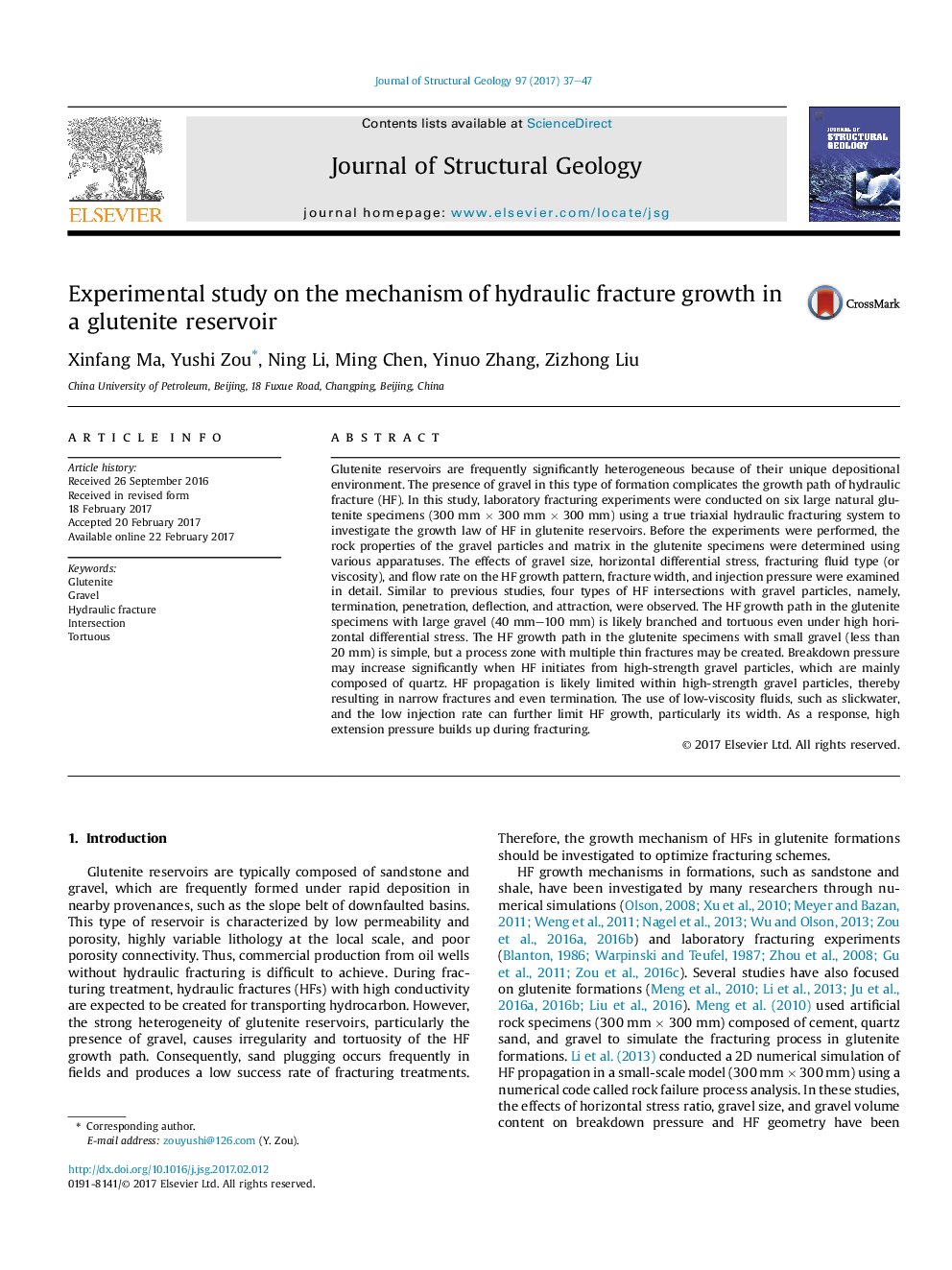| Article ID | Journal | Published Year | Pages | File Type |
|---|---|---|---|---|
| 5786337 | Journal of Structural Geology | 2017 | 11 Pages |
Abstract
Glutenite reservoirs are frequently significantly heterogeneous because of their unique depositional environment. The presence of gravel in this type of formation complicates the growth path of hydraulic fracture (HF). In this study, laboratory fracturing experiments were conducted on six large natural glutenite specimens (300 mm Ã 300 mm Ã 300 mm) using a true triaxial hydraulic fracturing system to investigate the growth law of HF in glutenite reservoirs. Before the experiments were performed, the rock properties of the gravel particles and matrix in the glutenite specimens were determined using various apparatuses. The effects of gravel size, horizontal differential stress, fracturing fluid type (or viscosity), and flow rate on the HF growth pattern, fracture width, and injection pressure were examined in detail. Similar to previous studies, four types of HF intersections with gravel particles, namely, termination, penetration, deflection, and attraction, were observed. The HF growth path in the glutenite specimens with large gravel (40 mm-100 mm) is likely branched and tortuous even under high horizontal differential stress. The HF growth path in the glutenite specimens with small gravel (less than 20 mm) is simple, but a process zone with multiple thin fractures may be created. Breakdown pressure may increase significantly when HF initiates from high-strength gravel particles, which are mainly composed of quartz. HF propagation is likely limited within high-strength gravel particles, thereby resulting in narrow fractures and even termination. The use of low-viscosity fluids, such as slickwater, and the low injection rate can further limit HF growth, particularly its width. As a response, high extension pressure builds up during fracturing.
Keywords
Related Topics
Physical Sciences and Engineering
Earth and Planetary Sciences
Geology
Authors
Xinfang Ma, Yushi Zou, Ning Li, Ming Chen, Yinuo Zhang, Zizhong Liu,
